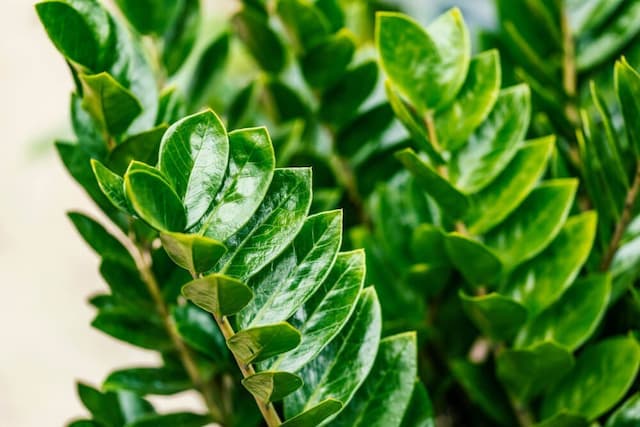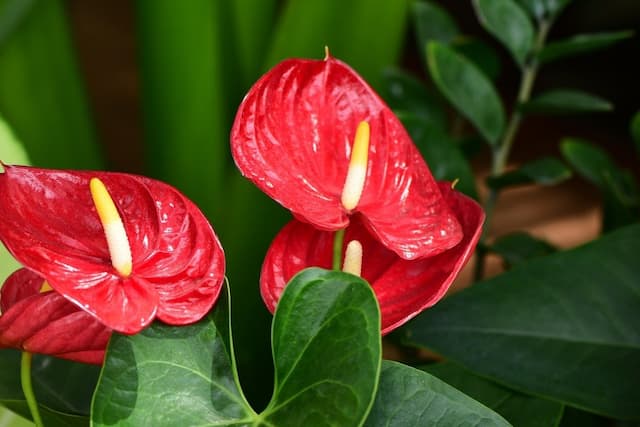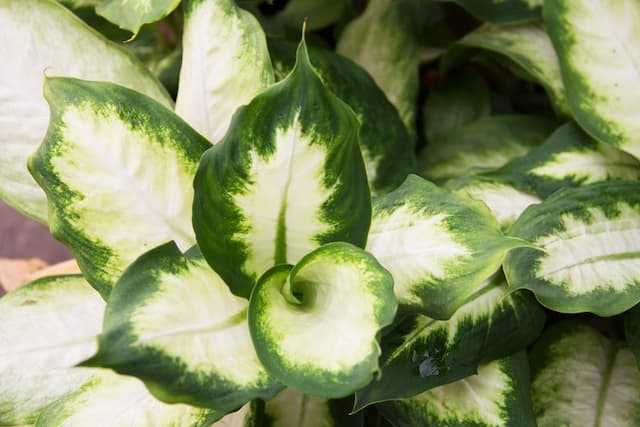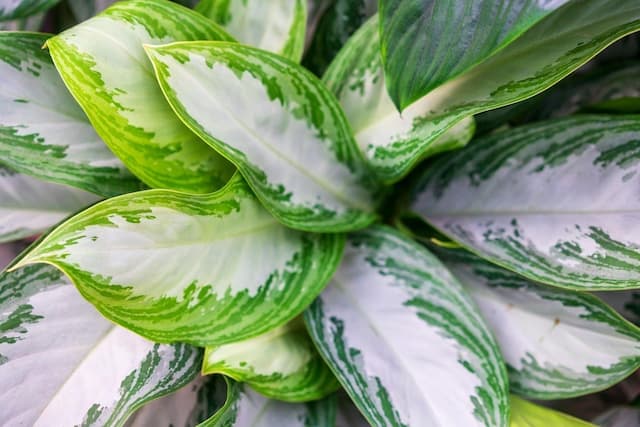Swiss cheese plant Monstera deliciosa



ABOUT
Monstera deliciosa, also known as the Swiss cheese plant or Split-leaf philodendron, is a tropical vine that is native to Central and South America. It is a popular houseplant known for its large, glossy leaves that are perforated with holes, giving the plant its nickname "Swiss cheese plant."
The leaves of Monstera deliciosa are oval or heart-shaped and can grow to be several feet long. The plant has a trailing habit and can grow to be quite large, with vines that can reach lengths of up to 20 feet or more. Monstera deliciosa produces aerial roots that help the plant climb and support itself as it grows.
In its native habitat, Monstera deliciosa is a climbing plant that can grow up trees or other structures. As a houseplant, it is often grown in pots or containers and trained to climb a trellis or other support. The plant prefers a warm, humid environment and thrives in bright, indirect light. It is easy to care for and makes an attractive addition to any indoor space.
About this plant
 Names
NamesFamily
Araceae
Synonyms
Split-leaf philodendron, Swiss cheese plant, Ceriman, Custard plant, Fruit salad plant, Indian ivy, Mexican breadfruit, Monstera, Hurricane plant, Window leaf plant, Delicious monster, Monster fruit, Windowleaf, Balazo, Penglai banana, Fruit salad tree, Monsterio delicio, Monstereo
Common names
Philodendron pertusum, Cutleaf Philodendron
 Toxicity
ToxicityTo humans
Swiss cheese plant is moderately toxic to humans.
The plant contains insoluble calcium oxalate crystals, which are needle-like and can cause injury to the mouth, tongue, and digestive tract of people if ingested. In addition, contact with the plant can cause dermatitis on the skin.
Symptoms of toxicity may include oral irritation, intense burning and irritation of the mouth, tongue, and lips, excessive drooling, vomiting, and difficulty swallowing.To pets
Swiss cheese plant is moderately toxic to both cats and dogs.
The plant contains insoluble calcium oxalate crystals, which are needle-like and can cause injury to the mouth, tongue, and digestive tract of animals if ingested. In addition, contact with the plant can cause dermatitis on the skin of cats and dogs.
Symptoms of toxicity may include oral irritation, intense burning and irritation of the mouth, tongue, and lips, excessive drooling, vomiting, and difficulty swallowing.
 Characteristics
CharacteristicsLife cycle
Perennials
Foliage type
Evergreen
Color of leaves
Dark green
Flower color
White
Height
Up to 20 feet
Spread
Up to 8 feet
Plant type
Climber
Hardiness zones
9
Native area
Central and South America
Benefits
 General Benefits
General BenefitsMonstera deliciosa is an attractive plant that is often grown as a houseplant due to its large, glossy leaves and trailing habit. The plant's unique leaves, which are perforated with holes, give it a distinctive appearance that makes it a popular choice for decorating indoor spaces;
Monstera deliciosa is believed to have air-purifying qualities and may be able to remove toxins and pollutants from the air. The plant is particularly effective at removing formaldehyde, which is a common indoor air pollutant;
Monstera deliciosa is relatively easy to care for and can thrive with minimal attention. The plant prefers bright, indirect light and a warm, humid environment, but it is generally tolerant of a wide range of conditions;
Monstera deliciosa can be grown in pots or containers, as well as in the ground. It can be trained to climb a trellis or other support, making it a versatile plant that can be grown in a variety of settings. Medical Properties
Medical PropertiesThis plant is not used for medical purposes
 Air-purifying Qualities
Air-purifying QualitiesThere have been several studies that have demonstrated the ability of Monstera deliciosa and other plants to remove formaldehyde and other pollutants from the air. It is believed that Monstera deliciosa may be able to remove toxins and pollutants from the air.
The plant is particularly effective at removing formaldehyde, which is a common indoor air pollutant. Formaldehyde is found in a variety of household products, including cleaning products, paints, and personal care products, and can have negative health effects if inhaled in large quantities. Other Uses
Other UsesMonstera deliciosa can be grown as a trailing plant and trained to climb a trellis or other support. This can create an interesting wall art effect in a room, with the plant's large leaves adding a tropical touch to the space;
Because Monstera deliciosa can grow to be quite large and has long trailing vines, it can be used as a natural privacy screen. The plant's large leaves can provide a visual barrier and create a sense of privacy in an outdoor space;
Due to its large, eye-catching leaves and tropical aesthetic, Monstera deliciosa can be used as a unique decoration for a wedding or other special event. The plant can be used as a backdrop for photos or as a focal point in a flower arrangement;
While it is not commonly used as a food plant, some people do use Monstera deliciosa as a source of food. The plant's unripe fruit is often used in traditional dishes in Central and South America and is said to have a taste similar to pineapple. However, it is important to note that the plant's ripe fruit is toxic and should not be consumed.
Interesting Facts
 Feng Shui
Feng ShuiFeng Shui is a traditional Chinese practice that involves the arrangement of objects and spaces in a way that is believed to promote harmony and balance.
Monstera deliciosa is often associated with wealth and abundance in Feng Shui. The plant's large, glossy leaves are believed to represent prosperity and can be used to attract positive energy and abundance to a space.
The Swiss cheese plant is also believed to bring good luck in Feng Shui. The plant's unique leaves, which are perforated with holes, are thought to symbolize opportunities and can be used to bring positive energy and good fortune to a space.
Monstera deliciosa is considered a part of the wood element in Feng Shui. The plant can be used to balance the wood element in a space and bring a sense of nature and growth to a room. Zodiac Sign Compitability
Zodiac Sign CompitabilityThe Monstera deliciosa is not used in astrology practice
 Plant Symbolism
Plant SymbolismMonstera deliciosa is often associated with prosperity, good luck, and growth. The plant's large, glossy leaves and unique appearance make it a visually striking addition to any space and can add a touch of tropical charm to a room.
 Water
WaterMonstera deliciosa prefers evenly moist soil, but it is important to avoid overwatering the plant. The best way to water the plant is to allow the top inch or so of soil to dry out before watering again. In general, the plant should be watered once or twice a week, depending on the conditions in your home.
When watering Monstera deliciosa, it is best to use room temperature water and water the plant thoroughly. Be sure to water the plant until water begins to drain from the bottom of the pot.
 Light
LightMonstera deliciosa prefers bright, indirect light and will thrive in a location that receives bright, indirect light for most of the day. The plant can tolerate low light conditions, but it may not grow as well and may have fewer leaves.
 Temperature
TemperatureMonstera deliciosa is a tropical plant and prefers warm, humid conditions. The plant will do best in a room that has temperatures between 70-80 degrees Fahrenheit. It is important to avoid exposing the plant to temperatures below 50 degrees Fahrenheit, as this can cause the plant to become stressed.
 Pruning
PruningMonstera deliciosa should be pruned to remove dead or damaged leaves and to encourage new growth. The plant can be pruned using sharp, clean scissors or pruning shears. When pruning the plant, be sure to cut back the stem to a healthy leaf node to encourage new growth.
 Cleaning
CleaningEvevry few weeks
 Soil
SoilThey prefer a soil mix with a slightly acidic pH, in the range of 5.5-6.5.
Monstera deliciosa should be fertilized during the growing season (spring and summer) using a balanced, water-soluble fertilizer. The plant can be fertilized every 2 - 4 weeks, depending on the specific fertilizer you are using and the plant's needs.
It is important to follow the instructions on the fertilizer packaging and to be careful not to over-fertilize the plant, as this can cause the leaves to yellow or become scorched. Repotting
RepottingMonstera deliciosa should be repotted every one to two years, depending on the plant's size and growth rate. The plant should be repotted in the spring or early summer using a well-draining potting soil. When repotting the plant, be sure to choose a pot that is only slightly larger than the plant's current pot, as Monstera deliciosa prefers to be slightly pot-bound.
 Humidity & Misting
Humidity & MistingMonstera deliciosa prefers a humid environment and will do best in a location that has a humidity level of 50-70%. To increase the humidity around the plant, you can mist the leaves regularly or use a humidifier. You can also place a tray of water near the plant or group plants together to create a more humid microclimate.
 Suitable locations
Suitable locationsIndoor
All year round.
Monstera deliciosa can be grown indoors in a pot or container. The plant prefers bright, indirect light and a warm, humid environment. It is important to water the plant regularly and to fertilize it during the growing season (spring and summer).Outdoor
Monstera deliciosa can also be grown outdoors in warmer climates. The plant prefers a location that receives bright, indirect light and well-draining soil. It is important to protect the plant from frost and to bring it indoors if the temperature drops below 50 degrees Fahrenheit.
Hardiness zone
10 - 12 USDA
 Life cycle
Life cycleThe life cycle of Monstera deliciosa begins with the germination of a seed. The seed will sprout and form a small plant with a single stem and a few leaves. As the plant grows, it will begin to produce aerial roots, which help it to climb and support itself as it grows. Over time, the plant will develop a more complex root system and will continue to produce new leaves and stems.
As the plant matures, it may produce flowers and fruit. The flowers of Monstera deliciosa are small and green and are not particularly showy. The plant's fruit is green when unripe and turns yellow or orange when ripe. The fruit is not typically eaten, as it is toxic when ripe.
Overall, Monstera deliciosa is a slow-growing plant that can take several years to reach its full size. The plant can grow to be quite large, with leaves that can reach up to three feet in length. With proper care, Monstera deliciosa can live for many years and can be a beautiful and interesting addition to any home. Propogation
PropogationPropogation time
Spring
By STEM CUTTINGS:
One way to propagate Monstera deliciosa is to take stem cuttings from the plant and root them in water or soil. To take stem cuttings, use a sharp, clean knife or scissors to cut a stem that has at least two or three leaves on it. The stem should be about four to six inches long. Remove the lower leaves and dip the cut end in rooting hormone. Plant the cutting in a pot filled with well-draining soil or water, and keep the soil moist until the cutting has rooted.
By AERAL ROOT CUTTINGS:
Another way to propagate Monstera deliciosa is to take aerial root cuttings from the plant. Aerial roots are the thin, root-like structures that the plant produces to help it climb and support itself as it grows. To take an aerial root cutting, gently remove a healthy aerial root from the plant and plant it in a pot filled with well-draining soil. Keep the soil moist until the root has rooted and a new plant has formed.
By OFFSETS:
Monstera deliciosa can also be propagated by dividing offsets, which are small plants that form at the base of the main plant. To propagate offsets, gently remove them from the main plant and plant them in their own pots filled with well-draining soil. Keep the soil moist until the offsets have rooted and have formed new leaves.
 Pests
PestsSpider mite, Mealybug, Aphid
 Diseases
DiseasesRoot Rot, Leaf spot









